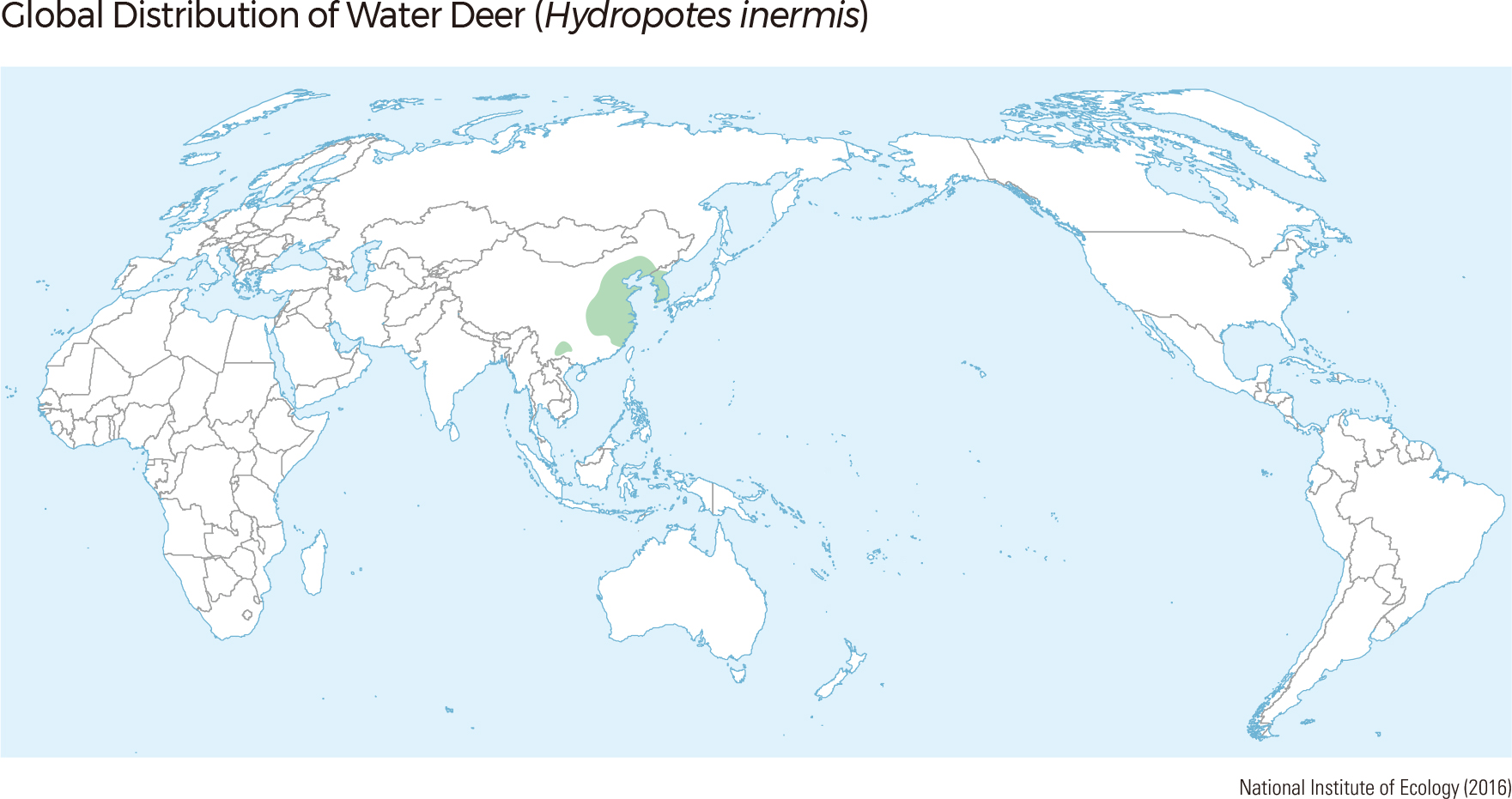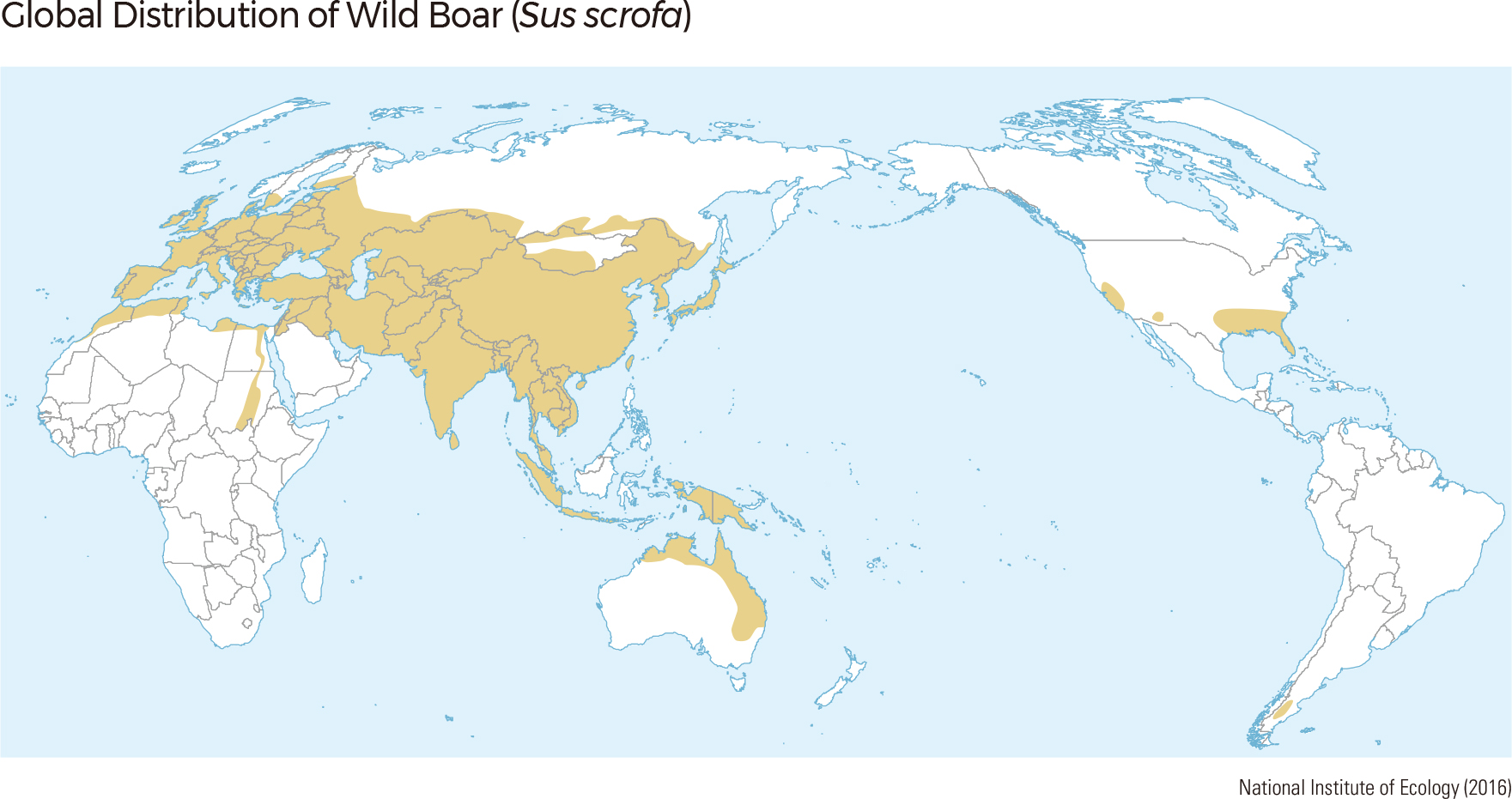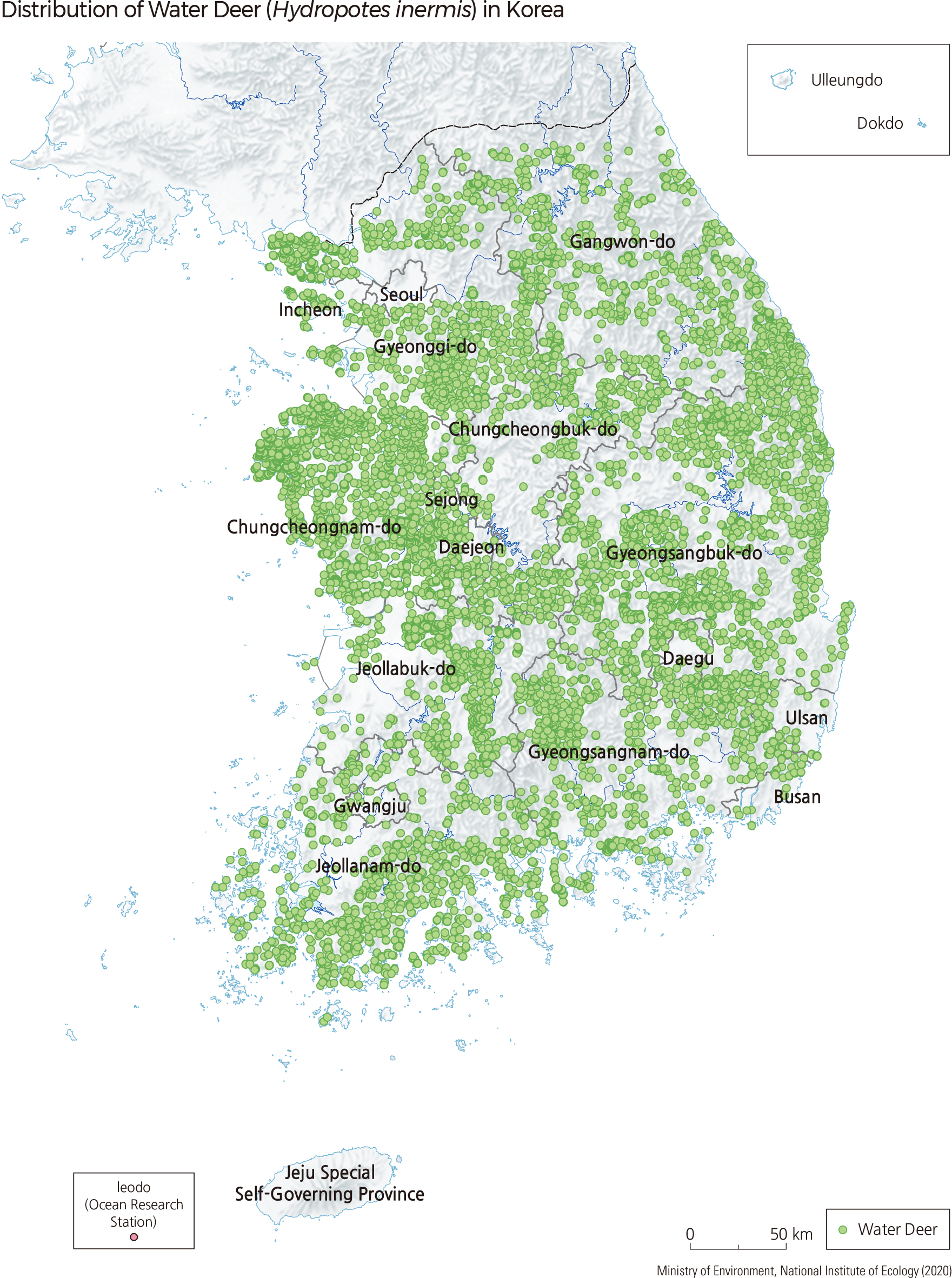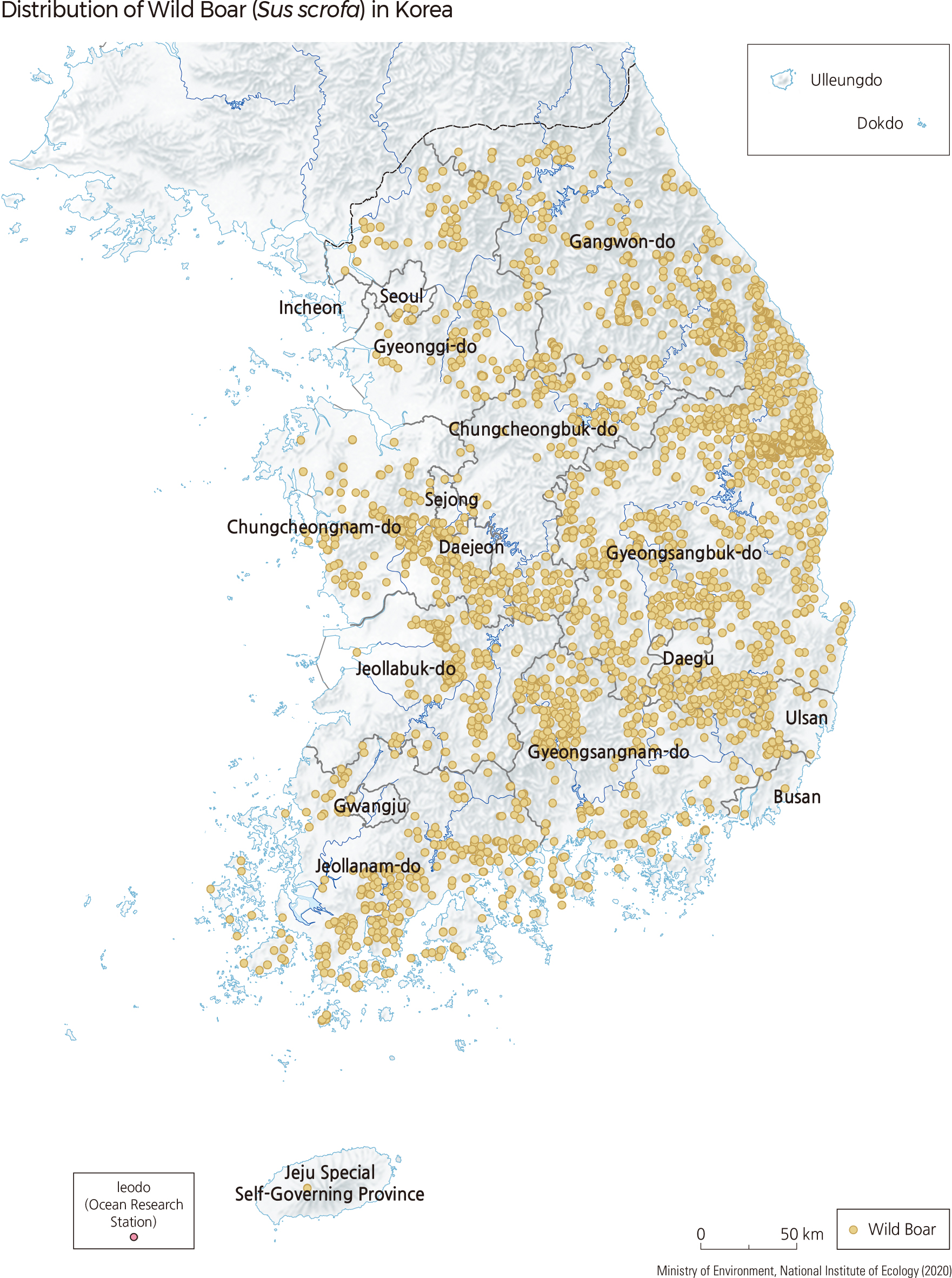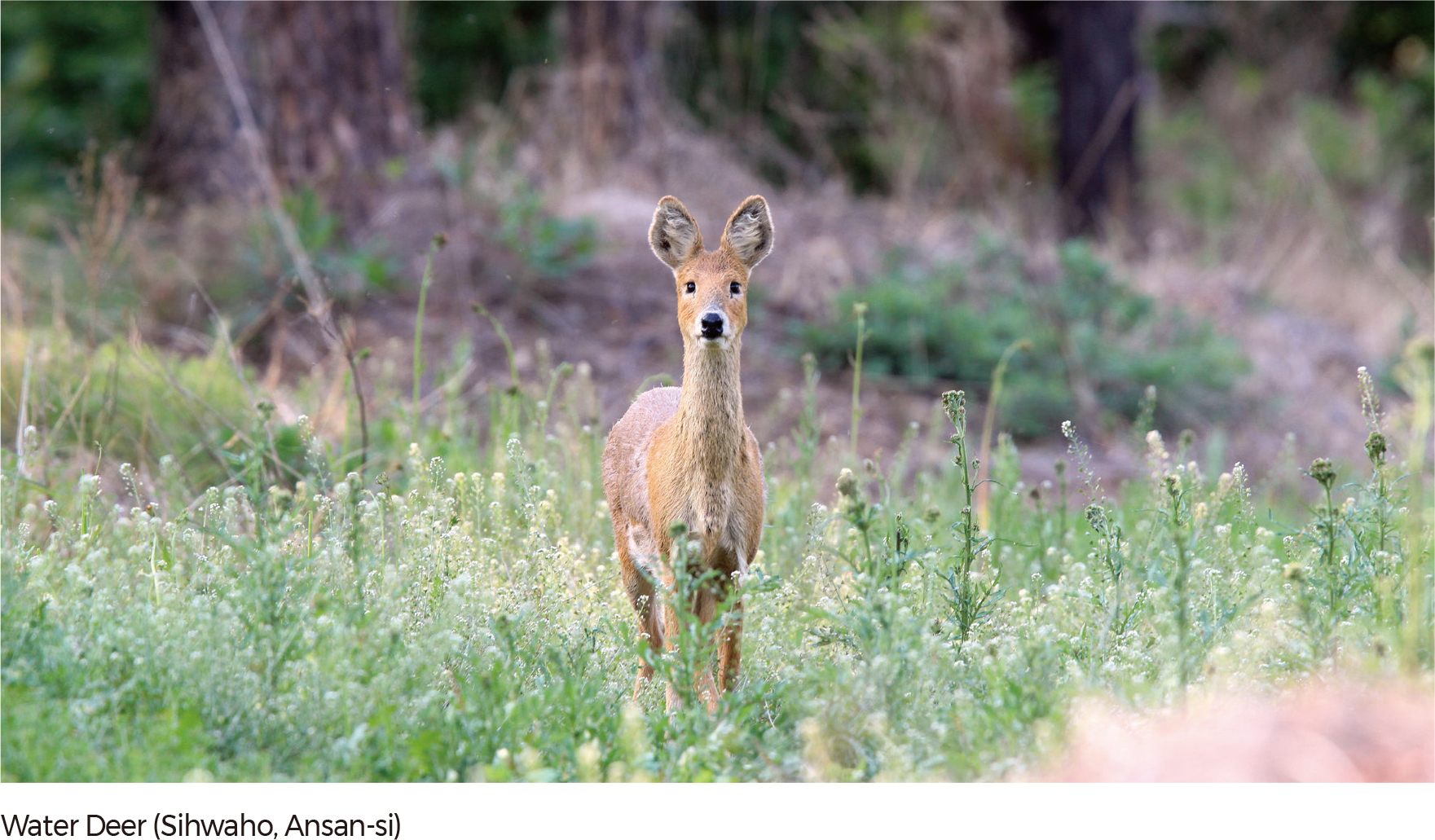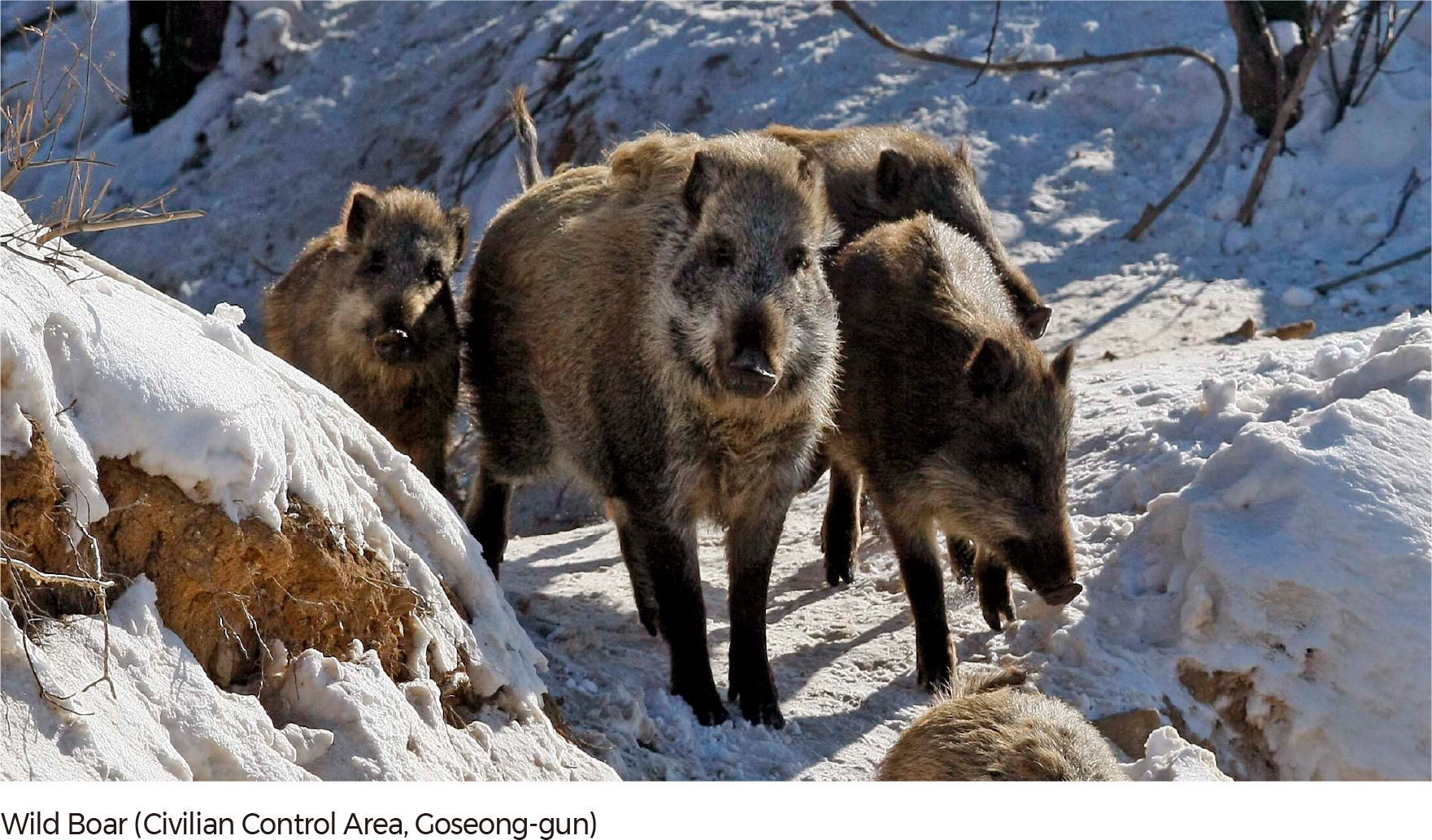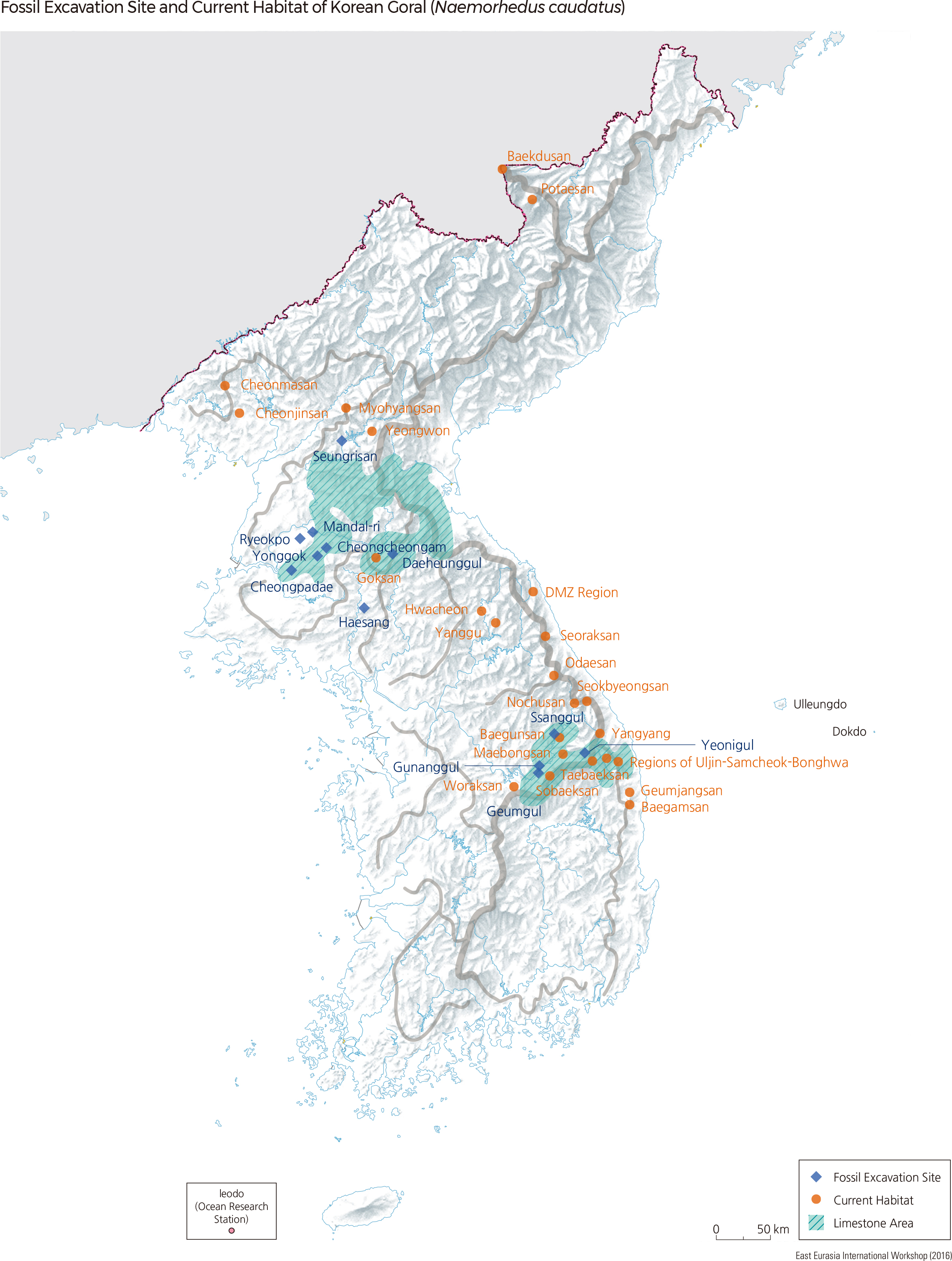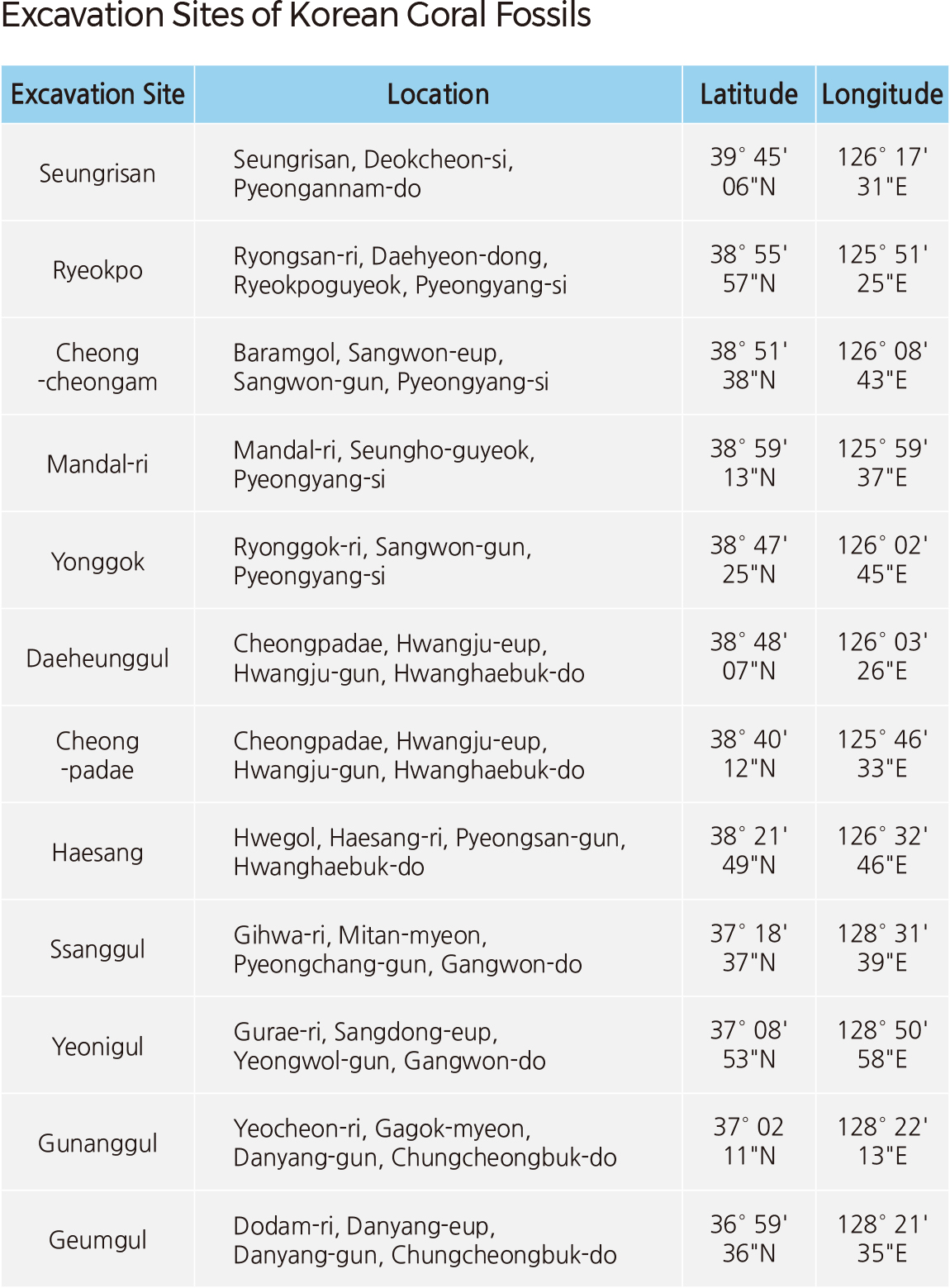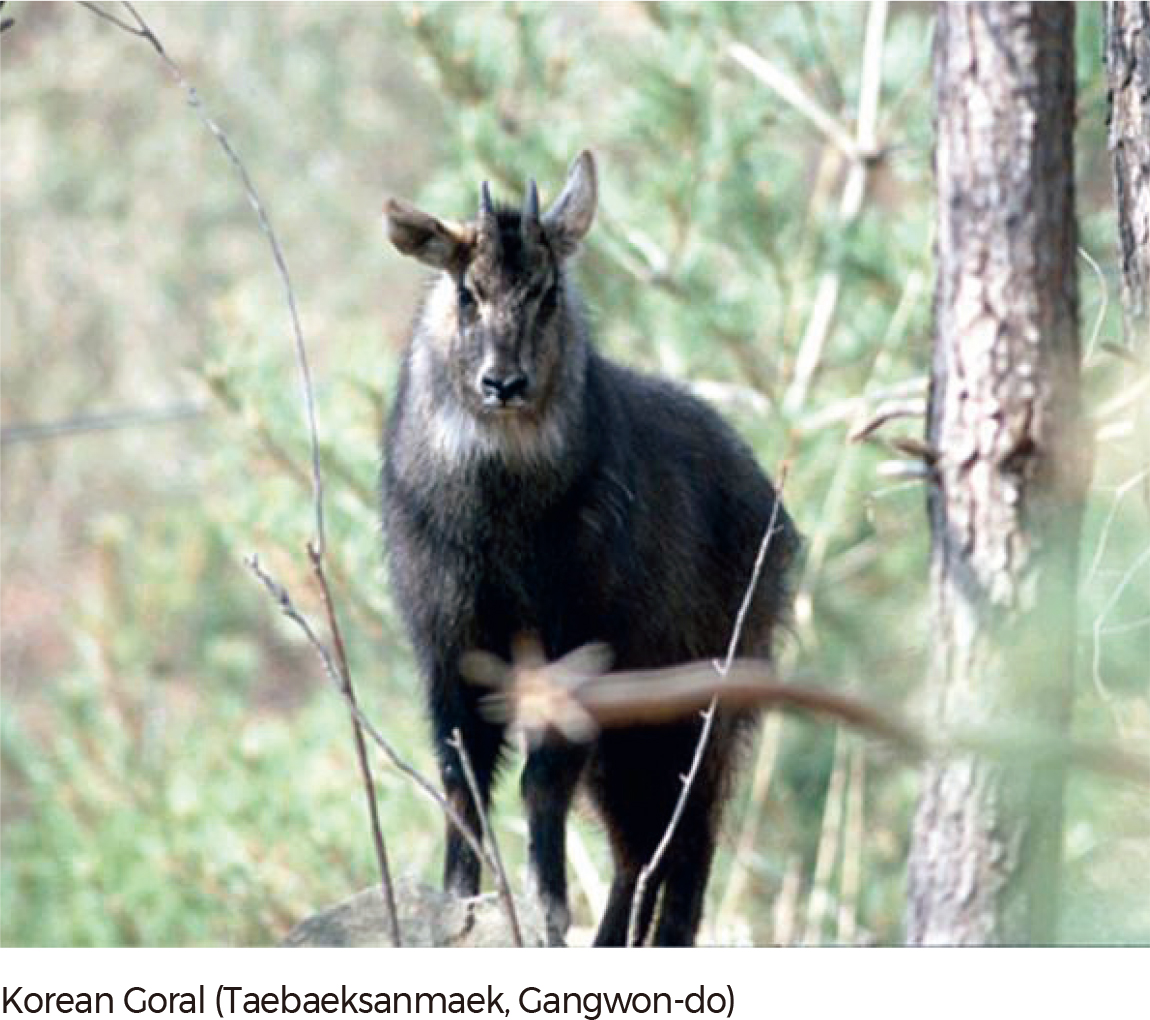English II 2020
The Water Deer (Hydropotes inermis) only inhabits certain regions of South Korea and China, so that it is classified into a different subspecies. Despite its lack of antlers, it has canine teeth used to confront other males or to mark out its territory. Water Deer molt during the spring and autumn, mate from December to January, and give birth to 2–6 young around early June. They are cautious and active at night around lowland forests and cultivated fields.
The Wild Boar (Sus scrofa) had been distributed throughout South Korea except in Jejudo; however, the species has been naturalized in Jejudo recently. With a high fertility rate and the ability to adapt to its environment, the population is growing. The Wild Boar is mostly nocturnal and able to cross kilometers of river or sea in some cases. The Wild Boar can generally be described as having a large head, short neck, small eyes, and relatively big ears. More specifically, its head is long and conical-shaped, and its neck is short and thick. It has triangle-shaped earflaps that point upwards, and its eyes are very small, while its legs are short and thick. Bristles cover its body, with fur resembling a mane on top. Its coat consists of brown fur that fades with age. Two canine teeth protrude at the bridge of the nose. The disappearance of large predatory animals such as tigers and leopards in Korea has led to a constant increase in the population of the Wild Boar, and the species has been encroaching on farmlands, causing damage. The Ministry of Environment has designated the Wild Boar as a harmful wild animal and controls its population size.
The Korean Goral (Naemorhedus caudatus) has been on the Earth for 2 million years; individuals today are called "Living Fossils." The Korean Goral is a wild goat species found in the mountains of eastern and northern Asia, including Russia, China, and Korea. Approximately 700–800 gorals live in Korea. This species has been listed as endangered in South Korea and has been designated as Natural Monument No. 217. It inhabits steep, rocky mountains along Nangnimsanmaek and Taebaeksanmaek; a few are also found around the Baekdusan area and in the Korean Demilitarized Zone.
Since the oldest Korean Goral fossil, estimated to be 210 thousand years old (mid-Pleistocene), was excavated in Pyeong-yang, more fossils have been unearthed in seven places in North Korea and four places in South Korea. Most were found in flat lowlands of the northwestern and central regions of the Korean Peninsula. This distribution pattern may indicate that, unlike today, the Korean Goral inhabited highlands and lowlands in the past.
According to historical documents (Sejong sillok jiriji, 1454; Shinjeung dongguk yeoji seungnam, 1531; Yeoji doseo, 1760; Gosa sibijib, 1787; Daedong jiji, 1861), Korean Gorals were mainly distributed in Gangwon-do, Pyeongan-do, and Hamgyeong-do. The gorals had a more extensive distributional range than they do today across regions such as Cheongsong in Gyeongsangbuk-do, Namwon in Jeollabuk-do, and Gurye in Jeollanam-do. However, they have moved to their current habitats after losing their original ones due to human disturbance.
The present-day distribution area of Korean Gorals may not be ideal. It is a refuge for the remaining gorals surviving a complex set of factors, including population growth and consequent land-use change, cultivation practices in forests such as slash-and-burn, and poaching of wildlife. The slash-and-burn practice is an important driver that has shrunk habitats of the Korean Goral, and as a result, the habitat range has been confined to the eastern mountainous areas. |
